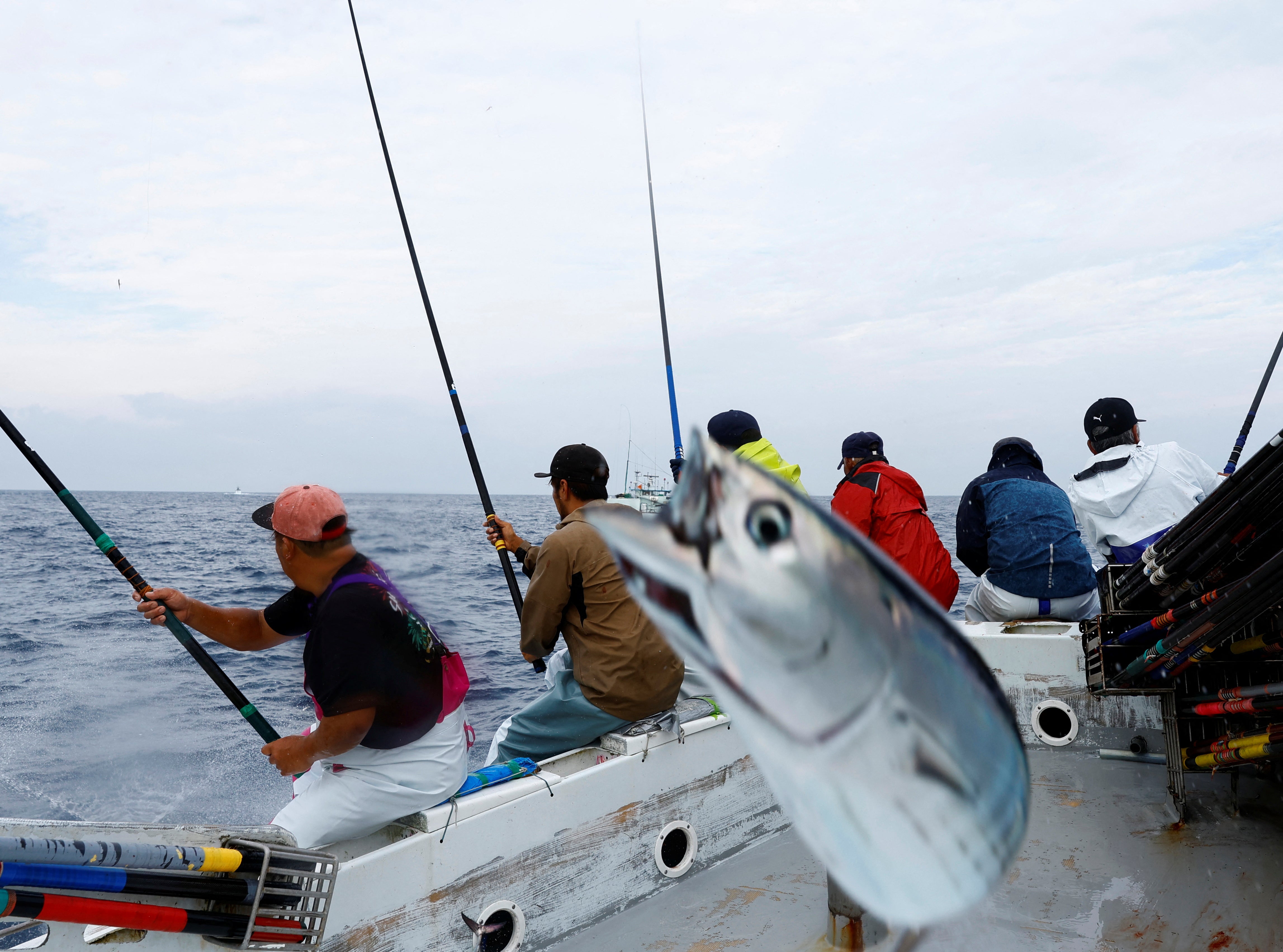Plight of Japan’s fatty ‘katsuo’ fish may foreshadow climate change
Changes in the sea have already wiped out other fish in the area

For half a century, Takeo Nakajo has been catching katsuo, or skipjack tuna, which is indispensable in Japanese cuisine whether eaten raw, dried or used as a base for broth.
But he and other fishermen in Kure, Kochi prefecture in southwest Japan, have seen something worrying in the past two years – an unprecedented number of unusually fatty katsuo.
While heavier katsuo means more money, locals and experts say it indicates the effects of climate change and poses a risk to katsuo numbers already under threat due to growing demand and overfishing.
“The fatty katsuo must have something to do with the water temperature,” said Nakajo, 70. “I have a sense of urgency thinking what if katsuo doesn’t come to the bay some day.”
Noriaki Ito, the head chef at a century-old restaurant Tsukasa in Kochi City, said he too had “never seen such fatty katsuo during this season of the year”.
This is worrying as changes in the sea and climate have already wiped out some other fish “including a shellfish called chambara-gai that used to be Kochi’s speciality”, Ito added.
Originally from tropical waters, some Pacific katsuo migrate northward on a warm ocean current every spring, making Kochi’s arc-shaped bay a fertile fishing ground.
The average surface temperature of the bay in winter has risen by 2C in the four decades to 2015, local fisheries lab data shows, and the fatter katsuo may be due to ample prey in the warmer sea.
But longer term, this warming may prevent mineral-rich water from rising to the surface, resulting in a drop in plankton and smaller fish to feed on, leading to fewer katsuo, said Hiroyuki Ukeda, an agro-scientist and vice president of Kochi University.
This comes as Japan’s ageing population is threatening the sustainability of local fishing and related businesses such as the production of dried and fermented katsuo and wasabi horseradish.
In Kure, a district in Nakatosa town, many fishermen have gone out of business in the past three decades, said Takahiro Tanaka, a fourth-generation owner of a fishmonger who calls himself a “katsuo sommelier”.
“We can distinguish different tastes of katsuo, just like ordinary French farmers may savour subtleties of wine ... this place might be one of Japan’s last communities where katsuo is part of the daily culture,” he added.
“But without fishers, this won’t last,” Tanaka said.
Fisherman Nakajo also rued the ageing community and fewer successors. “I asked my grandson if he would take over, but he’s now studying to work at a government office,” he said.
Sushi culture at risk
Overfishing has already hit catch numbers and dealt a blow to the fishermen in Kochi who have stuck to traditional single-pole fishing methods versus large-scale seine net fishing across the western Pacific.
Government data shows catch numbers in Kochi are only at a quarter of their 1980s peak.
“We have observed a catastrophic decline in landings over the last 10 years or so,” said Ukeda. “A growing number of people fear we may no longer be able to eat katsuo in the near future if things continue like this.”
Production of katsuobushi, dried and fermented katsuo, also known as bonito flakes, often used as a shaved condiment over traditional Japanese dishes or as a broth base, is already suffering.
The number of katsuobushi manufacturers in Kochi has plunged from dozens some 40 years ago to only a few, said Taichi Takeuchi, who runs one in the town of Usa.
“I’m really unsure if we can continue this,” said Takeuchi.
Wasabi, an essential for Japanese food, especially sashimi and sushi, is facing similar production challenges.
Typhoons and rising temperatures have hurt production in Okutama, a mountainous area to the west of Tokyo, said Masahiro Hoshina, 72, head of the local wasabi growers’ association.
“I am extremely worried about the future of our farming,” Hoshina said.
The number of farmers in the area is down 75 per cent from the 1950s due to depopulation, and unless something changes, there is anxiety that sushi itself could be endangered.
“The combination of raw fish and spice, as in katsuo and wasabi, is an art, and we must maintain both,” said Ukeda. “I never want to think about a future” without them, he added.
Photography by Kim Kyung-Hoon
Reuters
Subscribe to Independent Premium to bookmark this article
Want to bookmark your favourite articles and stories to read or reference later? Start your Independent Premium subscription today.

Join our commenting forum
Join thought-provoking conversations, follow other Independent readers and see their replies